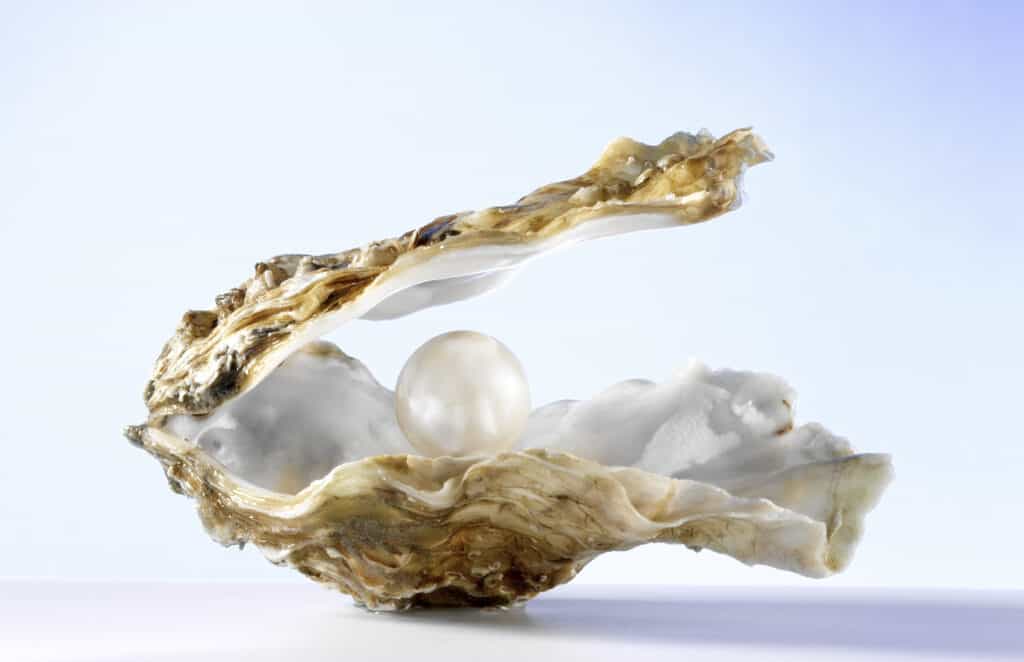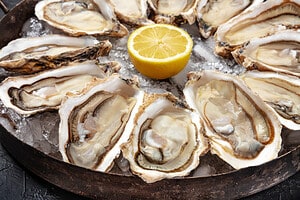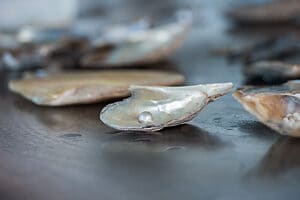When you walk into a restaurant and notice oysters on the menu, it can spark quite a variety of emotions. Probably a feeling of intrigue at first, or excitement if you’re a particular fan. However, most of the time, it can be a feeling of hesitation. After all, there are serious adverse effects to eating bad seafood. No one wants to spend the hours following a fancy dinner glued to the toilet.
That’s probably what leads you here. You want to determine exactly when you can confidently order this invertebrate off of the menu. Since it’s offered year-round, there is some warranted curiosity. So, here’s everything you need to know about oysters, from when they’re in season to where to get the best.
During What Months Are Oysters in Season?

In the Gulf of Mexico, where the water is particularly warm, oysters can spawn year-round.
©Plateresca/Shutterstock.com
This question is actually a bit tricky because it mostly depends on what “season” means to you. If you’re curious as to what season wild oysters reproduce, that would be during the summer months. Specifically, oysters will begin to spawn in May and finish doing so in late August. Although, in the Gulf of Mexico, the water is normally warm enough for them to appear throughout the year.
Although you’d think that oysters would be best harvested while they spawned, the opposite is true. Oysters are better left alone during spawning season for a number of reasons. Firstly, you want to make sure you aren’t harvesting them at a faster rate than they’re appearing. Secondly, and probably more importantly, they don’t taste as good while they’re spawning. They become very thick and fatty during the summer months, causing them to be, in turn, less flavorful. In the winter, though, these invertebrates become sturdy, lean, and delicious.
If you were alternatively asking when the best season to order oysters is, the truth is any time is totally okay. Though this isn’t a commonplace belief due to the age-old oyster legend we’ll elaborate on below, an oyster that has been properly stored and refrigerated can be eaten whenever you’d like.
The “R” Rule of Thumb

The belief in avoiding oyster consumption during the “R” months dates back over 4,000 years.
©PHIL LENOIR/Shutterstock.com
If you’re interested in this article, then chances are that you’ve heard this old rule of thumb. But in case you haven’t, or you need a quick refresher, here are the details. Dating back 4,000 years, people have said that oysters should only ever be consumed during the “R” months. This means any month aside from the summer months of May-August.
Those who wholeheartedly believe in this saying think that consuming any oysters over the summer is unhealthy and could result in illness. While there is always an associated risk between health problems and the consumption of seafood, this correlation is simply untrue.
Not only have safety precautions been set in place during the oyster procurement process, but there is also the added factor of farm-grown oysters, whose growth conditions have been meticulously crafted. Speaking of which, there has even been the development of a new genetic procedure used at oyster farms. These commercial farms use this genetic modification to render the oysters sterile, meaning they never spawn at all. With that set into place, the oysters can be harvested without consideration for spawning periods.
The Origin of This Belief
In the past, before modern refrigeration and transportation methods, oysters were more likely to spoil during hot weather. With limited preservation techniques, people relied on the “R” rule as a way to ensure they were consuming oysters when they were fresher and safer to eat. It makes sense- there was no way to preserve the oysters for long periods of time. But now, with the help of new methods of preservation, there are ways to consume oysters any time of the year.
Tips on Buying and Storing Oysters

An oyster with a loose shell is likely dead, which means you should avoid purchasing and consuming it!
©Carlos Pereira M/Shutterstock.com
Now that we’ve explained that there’s no threat to your health in enjoying oysters in the summertime, let’s take a moment to explain the best ways to optimize the storage and purchasing of these tasty treats.
The first trick to buying excellent oysters is to make sure the ones you grab are the heaviest. The heavier they are, the more full of water. This is important because the weight can determine both the plumpness and age of the oyster, factors that greatly determine a quality taste.
Never buy an oyster that has a loose shell. Oysters must always be sold live, and when an oyster is alive, the shell is clamped tightly and rigidly shut. If your oyster has a shell that’s moving about, that means it is a dead and effectively inedible oyster.
The last piece of advice is to try and consume the oysters you purchase within 24 hours. This guarantees the best taste possible. That being said, if you absolutely need to save them for a few days, they can be stored in the refrigerator in an open container covered by a wet cloth.
Which State Has the Best Oysters?
Although the European nation of France professes that they have the best oysters in the world, there are plenty of fantastic oyster options closer to home. Some states have actually become quite known for their excellent oysters due to their accessibility to waterways like the Gulf Coast and Chesapeake Bay. These states include but aren’t limited to Maine, Massachusetts, Washington, and California. If you don’t believe me, then try some for yourself! After all, oysters are always in season.
The photo featured at the top of this post is © stockcreations/Shutterstock.com
Thank you for reading! Have some feedback for us? Contact the AZ Animals editorial team.







